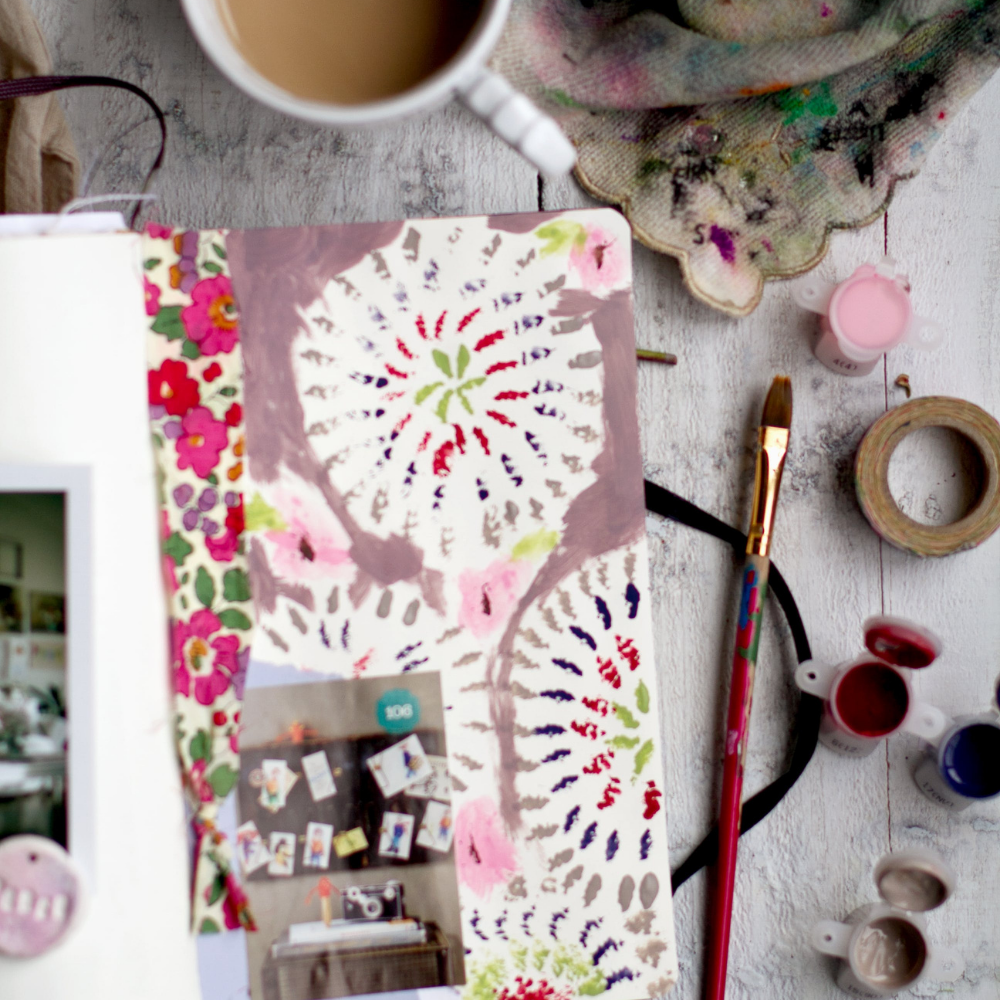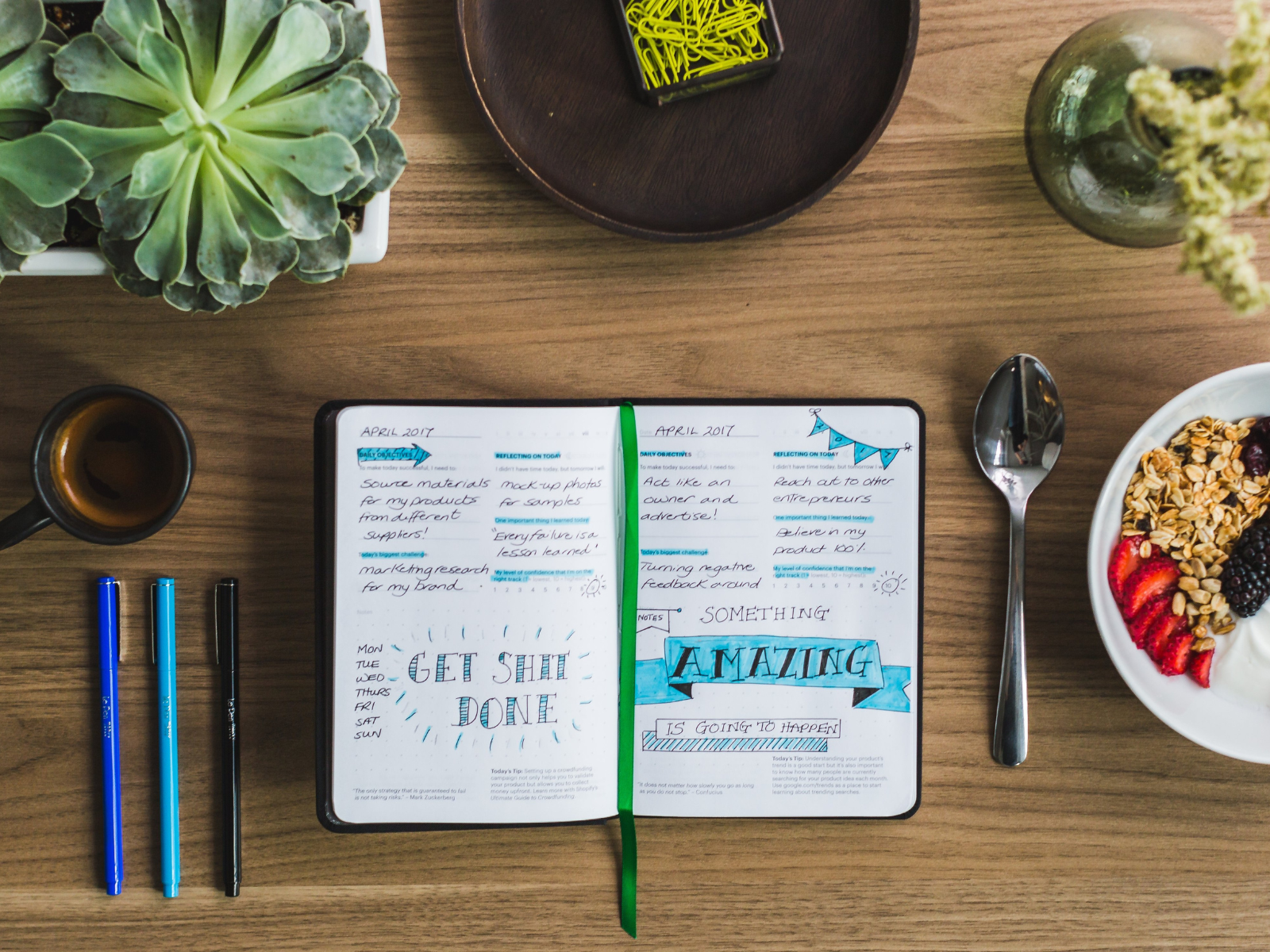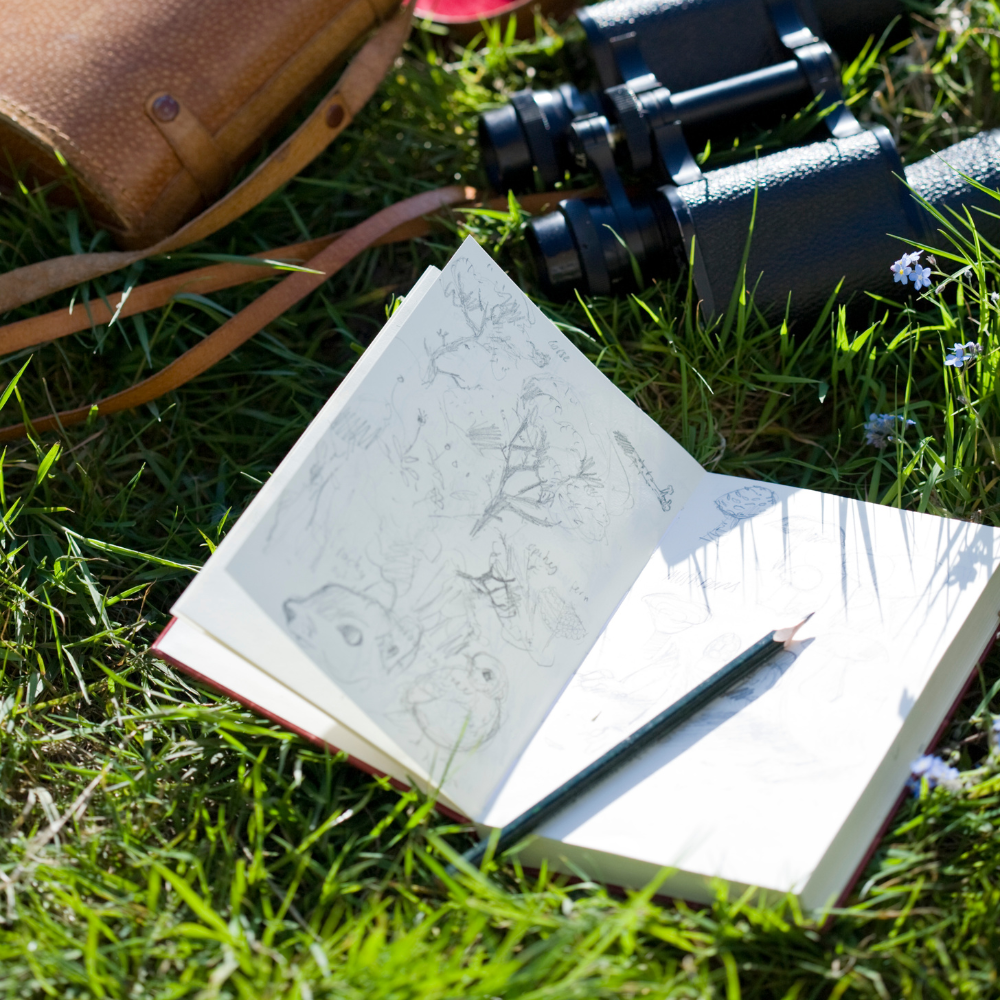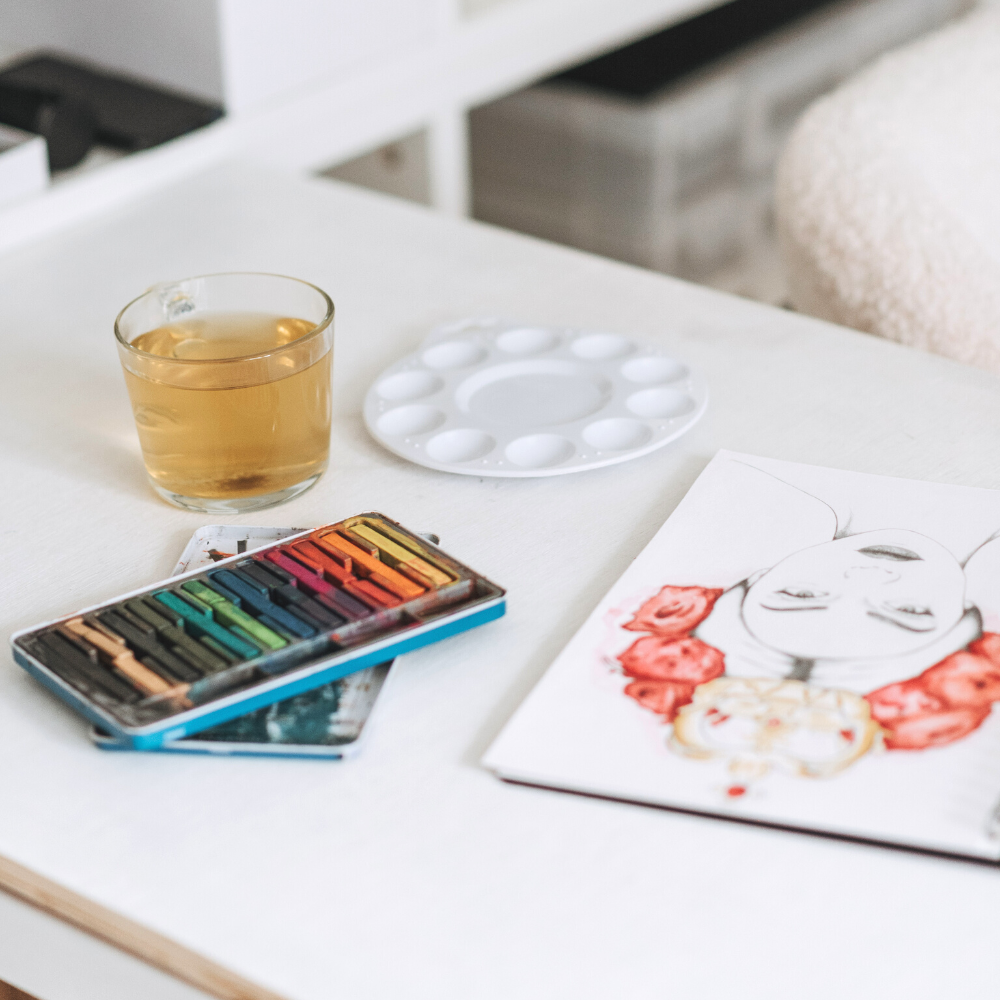Are you looking for a new way to unleash your creativity?
Have you heard about art journaling but aren't quite sure what it entails?
Well, you've come to the right place!
Whether you're a seasoned artist or just starting out, the art journaling trend has taken the creative world by storm, and it's time for you to jump on board.
But what exactly does an art journal look like?
Is it just a regular sketchbook filled with doodles and drawings, or is it something more?
Fear not, dear artist, for in this exciting blog post, we'll delve into the depths of art journaling and uncover all its secrets.
Picture this: a beautiful journal filled with vibrant colors, intricate drawings, and thought-provoking quotes.
It's like a treasure trove of inspiration and ideas, all bundled up in one glorious masterpiece.
From the pages filled with colorful mixed media to the thought-provoking musings that accompany each piece, art journaling is a one-of-a-kind form of self-expression that knows no limits.
So, grab your pens, paints, and a curious sense of adventure, as we embark on a creative journey like no other.
Join us as we reveal the magic and wonder of art journaling, and discover how you can channel your inner artist through this captivating medium.
Get ready to unleash your imagination, because there's a whole world of artistic possibilities waiting for you within the pages of an art journal.
Let the creative sparks fly!
Key Takeaways:
- An art journal is a visual diary that combines elements of writing and artwork to express thoughts, emotions, and creativity.
- Art journals can vary widely in appearance, often featuring mixed media, collage, and various art supplies to create textured, vibrant pages.
- Starting an art journal requires minimal supplies and can be a powerful tool for self-expression and creative self-care.
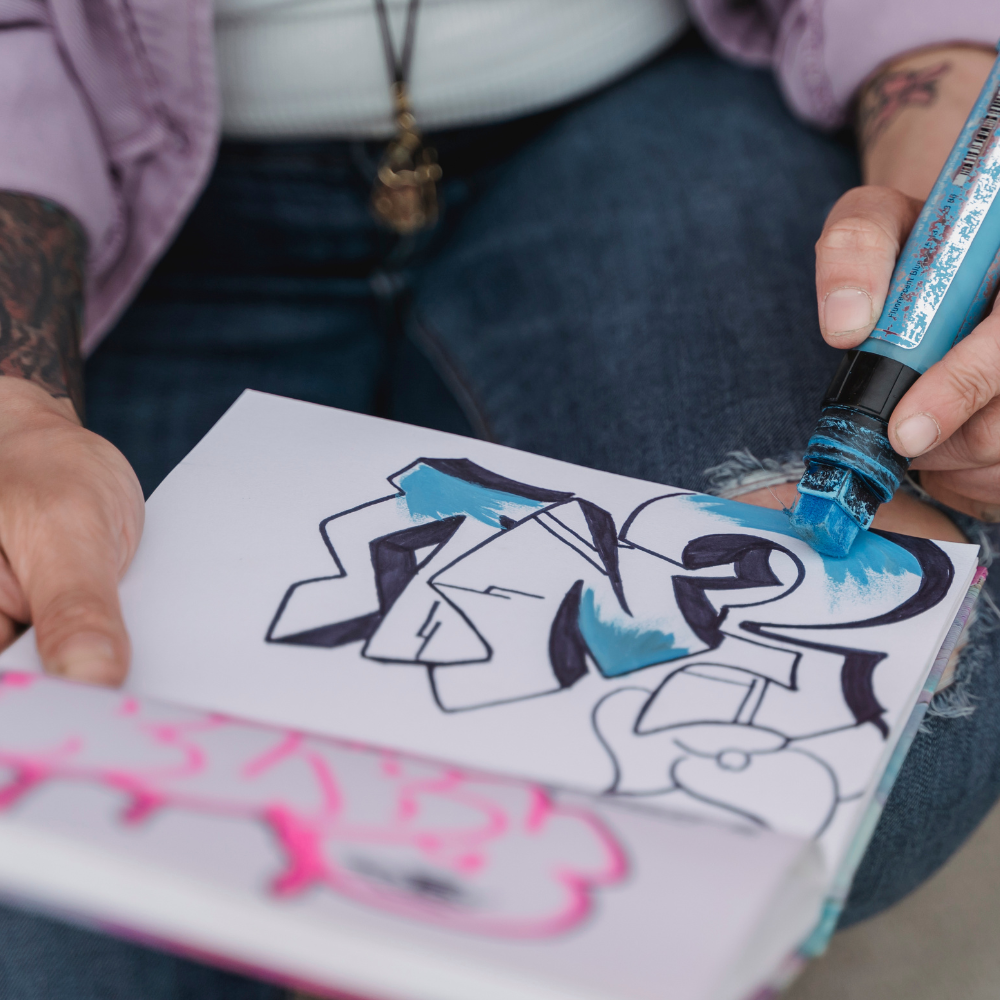
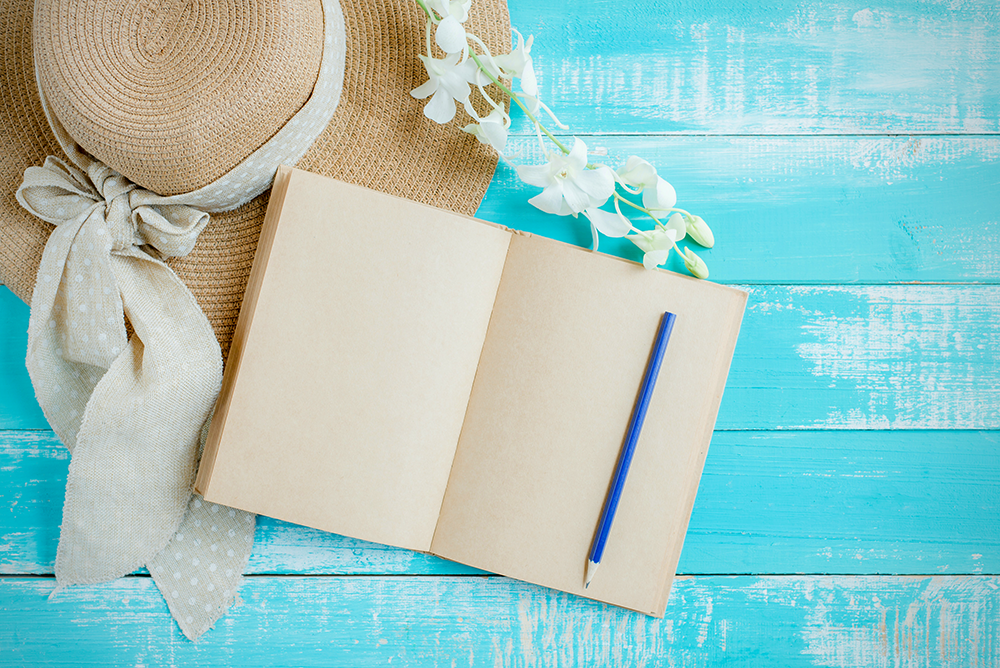

The Essence of Art Journals
Many artists turn to art journaling as a way to document their creativity, express themselves, explore different techniques and mediums, and simply have fun.
Art journals are a unique and personal form of expression that blend the visual and the written word into a cohesive, creative outlet.
They are a no-holds-barred space for artists and non-artists alike to explore their creativity, document their lives, and engage in a form of self-care.
Art journals are as varied as the individuals who create them; they can be purely filled with pencil drawings or a riot of colors from acrylic paint.
Some may resemble traditional bullet journals with a focus on organization and planning, while others are expressive outlets with no rules or boundaries.
The essence of an art journal lies in its ability to be a personalized space for creative ideas and self-expression.
Starting an Art Journal
To start journaling, you don't need an extensive collection of art supplies.
Simple art materials like a blank page notebook with thick paper, a gel pen, and colored pencils are enough to begin.
The fun part is that as you delve deeper into the creative process, you can incorporate more art journal supplies like spray bottles, stamp patterns, and wet media.
You can use images from magazines, tickets, receipts, or any other objects that you find visually inspiring and incorporate them into your journal.
The possibilities are endless!
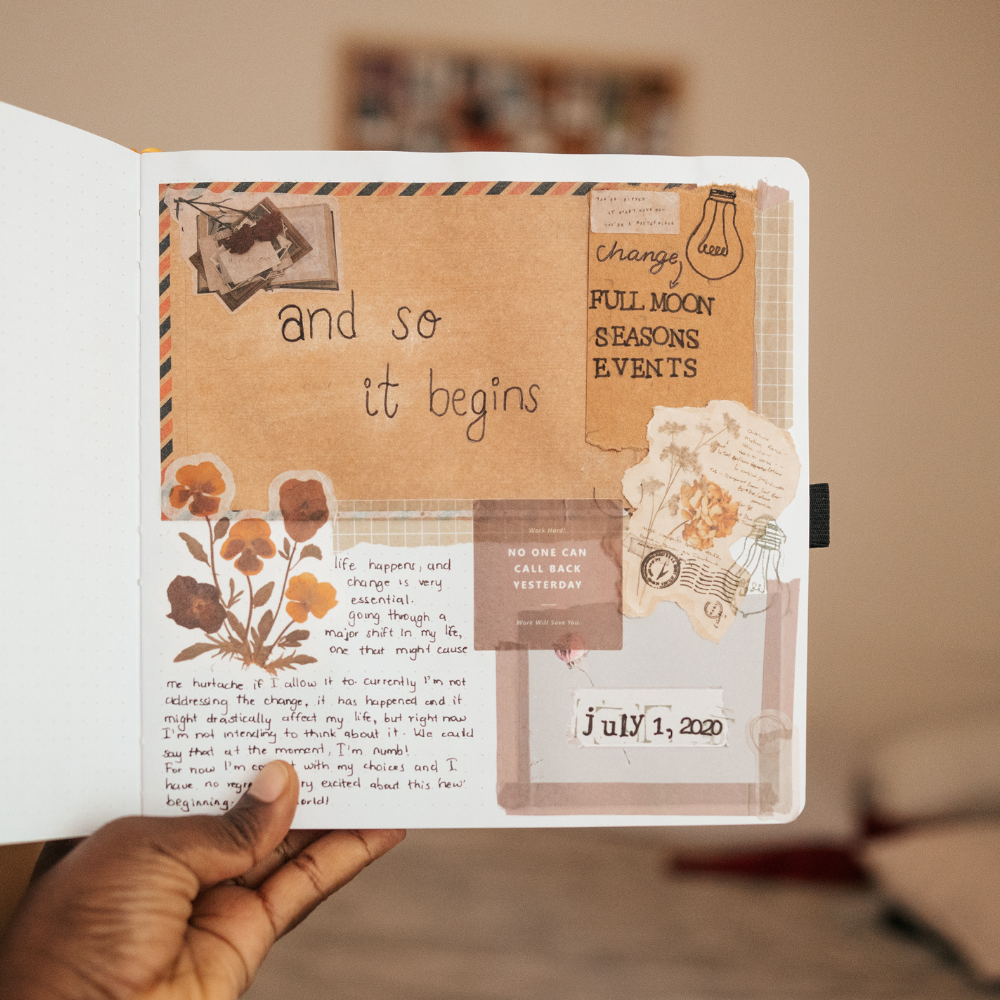
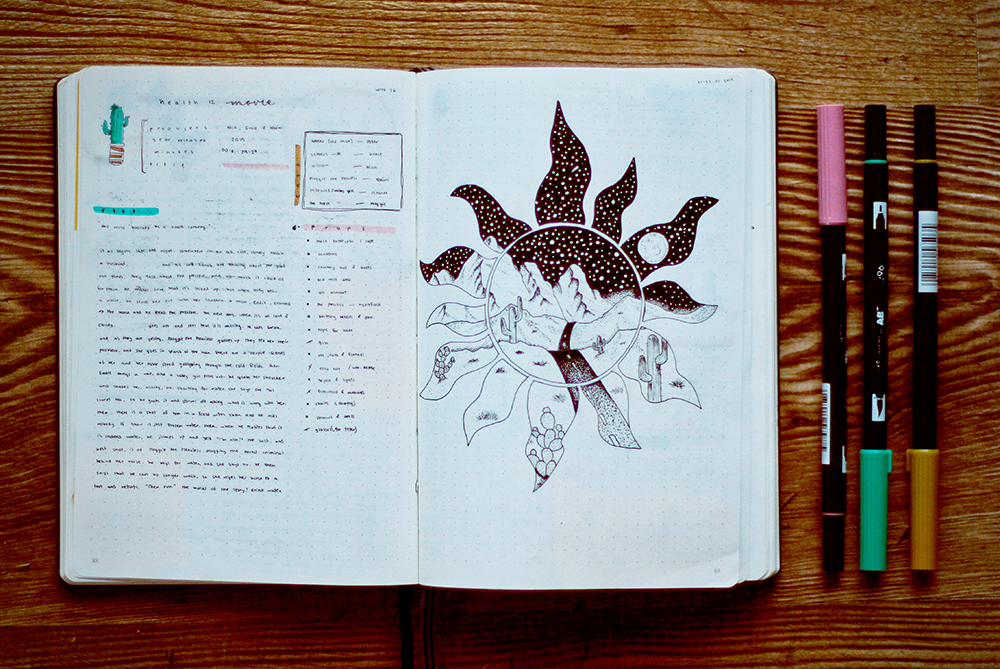
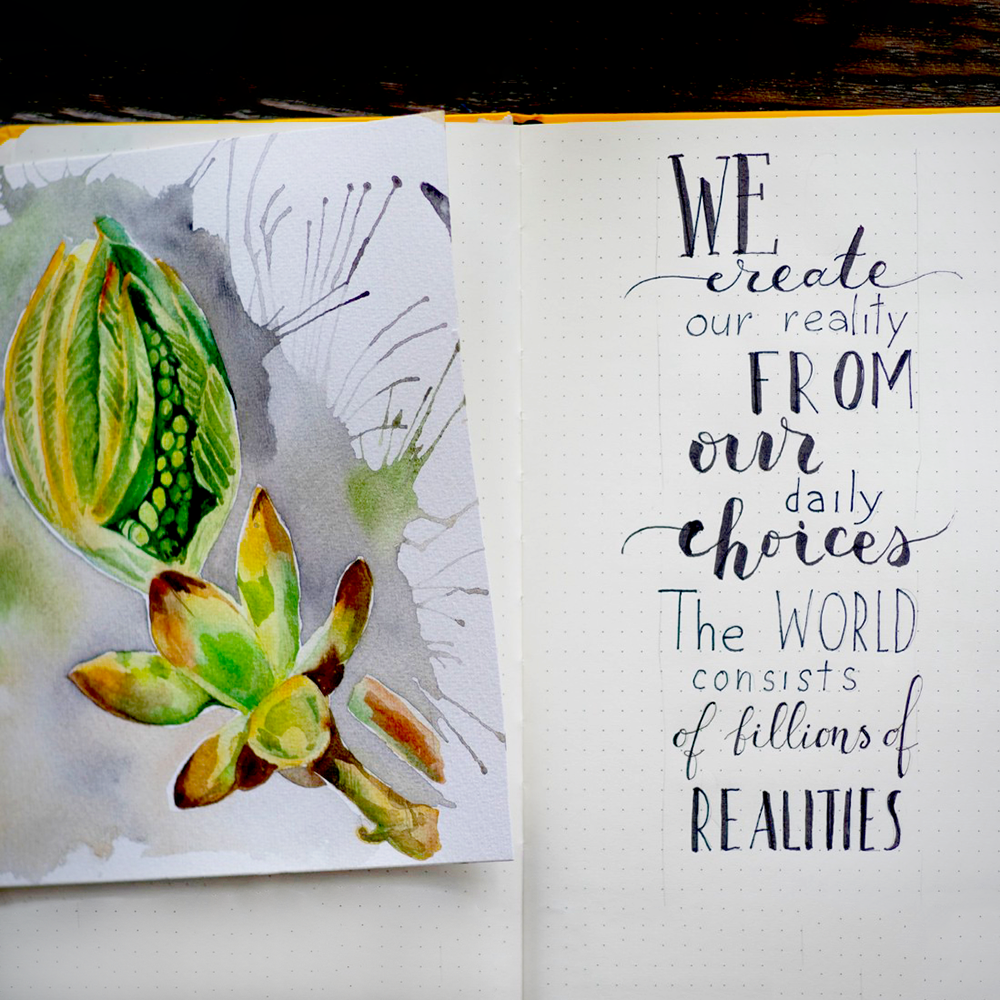
Choosing Your Journal
When selecting one journal to begin your journey, consider the type of media you want to use.
If you plan to use wet media like finger paint or acrylic paint, a journal with thicker paper is ideal.
For those who prefer writing and pencil drawings, a journal with smooth, fine paper may be more suitable.
Ultimately, the type of journal you choose should cater to your art style and preferred media.
Don't be afraid to experiment with different journals until you find one that suits your creative needs.
There are many different types of art journals, each with its unique style and purpose.
Here are some of the most popular types:
- Visual journals: these journals focus on visual art, like drawings, paintings, or collages. They can be themed around a particular subject, technique, or mood, or simply be a collection of random art pieces.
- Bullet journals: these journals are a hybrid between a planner and an art journal. They feature a structured layout with to-do lists, calendars, trackers, and other organisational tools, mixed with creative elements like doodles, stickers, or hand-lettering.
- Smash books: these journals are made for collecting mementoes, like ticket stubs, postcards, photos, or quotes. They are filled with pockets, envelopes, and other interactive elements that allow you to store and display your keepsakes creatively.
- Gratitude journals: these journals are designed to help you focus on the positive and practice gratitude. They feature prompts, quotes, or affirmations that encourage you to reflect on your blessings and express your appreciation.
- Art therapy journals: these journals are used in art therapy sessions to provide a safe space for self-expression and emotional healing. They can be structured or free-form, and the focus is on processing emotions, exploring feelings, and finding new perspectives.
No matter what type of art journal you choose, the most important thing is to make it your own.
Add your personality, your interests, your style, and your voice to your journal.
Experiment with different materials and techniques, mix and match different forms of art, and don't be afraid to make mistakes.
Your journal is a reflection of you, and there are no rules when it comes to self-expression.
The Role of Mixed Media Journals
Mixed media journals are a great metaphor for life—imperfectly beautiful and layered.
Mixed media means using a variety of art supplies such as paint, ink, scrapbook paper, and more to create layers of texture and dimension on a page.
Mixed media journals are incredibly versatile and can accommodate various mediums, making them an ideal choice for art journaling.
These journals often incorporate colors, textures, and materials in several stages, creating pages that are rich with visual interest.
From painted backgrounds to paper ephemera, mixed media journals are a testament to the artist's journey through life and art.
They provide an ideal foundation for combining writing, sketching, and painting to create a cohesive art piece.
If you're someone who loves playing with various mediums and textures, mixed media journals may be the perfect fit for you!
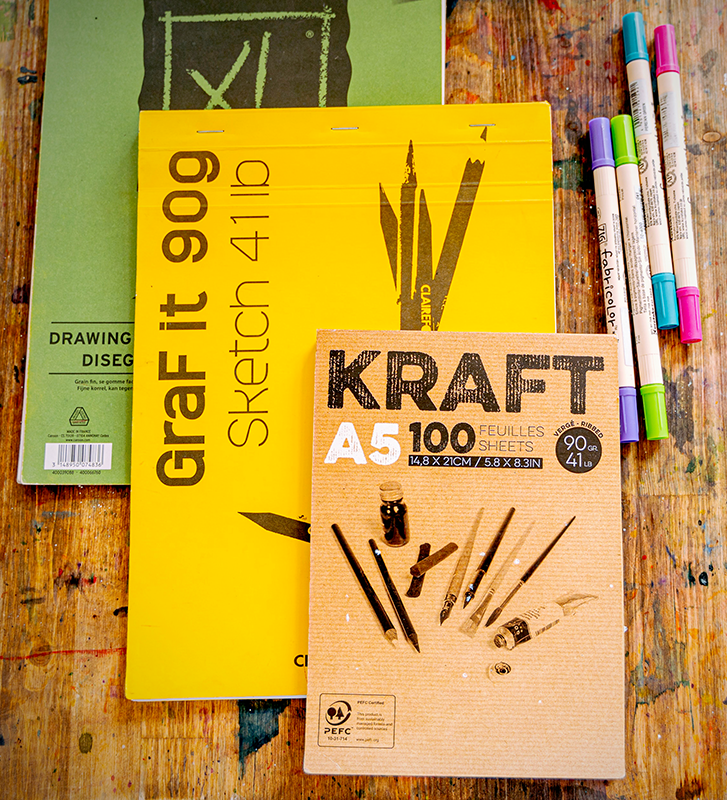
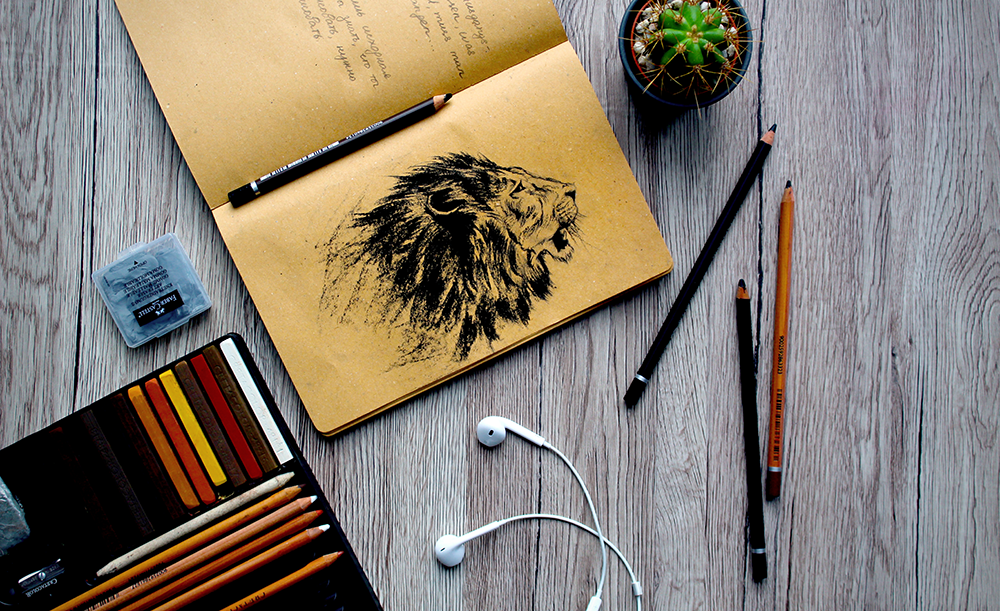
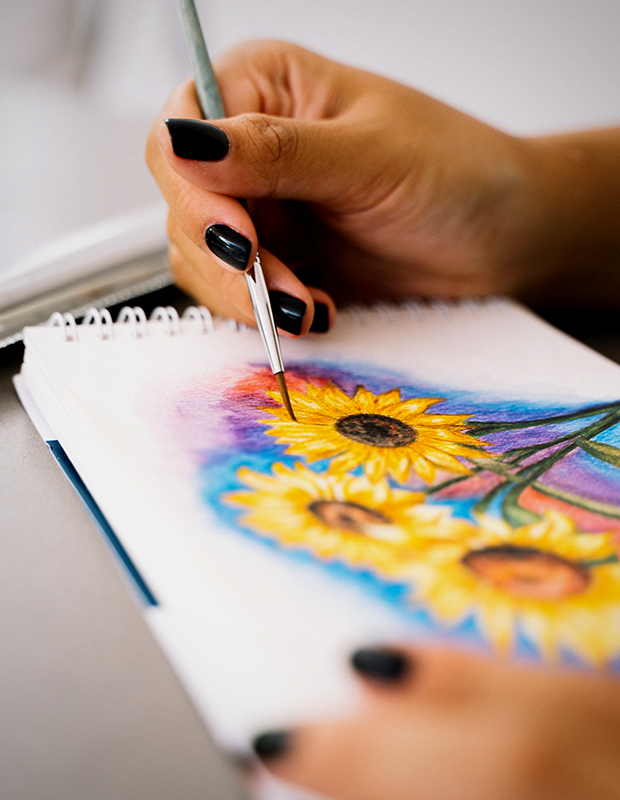
Art Supplies for Journaling
The art supplies you choose can greatly influence the look of your art journal.
From the basics like gel pen scribbles and colored pencils to more advanced supplies like acrylic paints and stamp patterns, the materials you use will shape your journal's aesthetic and how you to art journal.
Therefore, it's essential to experiment with different art supplies and discover which ones you enjoy using the most.
Some popular choices for art journaling include:
- Acrylic paints
- Watercolors
- Color pencils
- Gel pens
- Collage materials (magazine cutouts, scrapbook paper, etc.)
- Ink pads and stamps
- Spray inks
- Stencils
- Washi tape
Regardless of the supplies you choose, remember that an art journal should be a space for experimentation and self-expression.
Don't be afraid to try new techniques or mix different mediums to see what works best for you.
How Art Journals Foster Creativity
Art journals are more than just decorative pages filled with colors and textures.
They are a powerful tool for self-expression and fostering creativity.
Art journaling is not just about making art; it's about the process.
It's a way to de-stress, to work through a particular situation, or just playful mark making.
The creative process is about letting your creative juices flow and seeing where they take you, without being worried about the page looking perfect.
By allowing yourself to play, experiment, and create without any pressure or expectations, you are giving your inner artist the freedom to flourish.
Art journals can also serve as a form of creative self-care, providing a space to express emotions and reflect on thoughts in a visual way.
The combination of art and writing in an art journal allows for a deeper level of self-expression, making it a powerful outlet for creativity and personal growth.
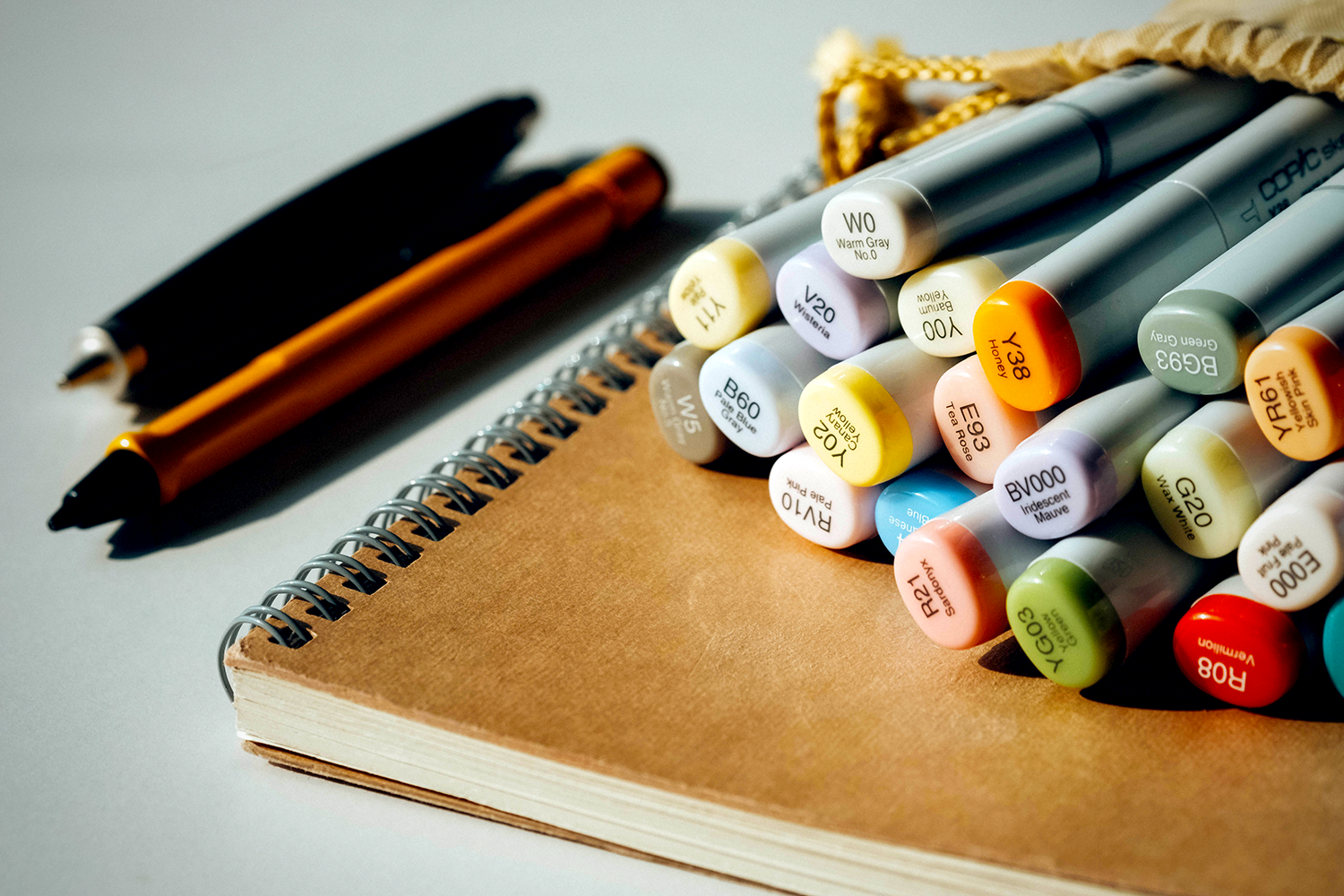

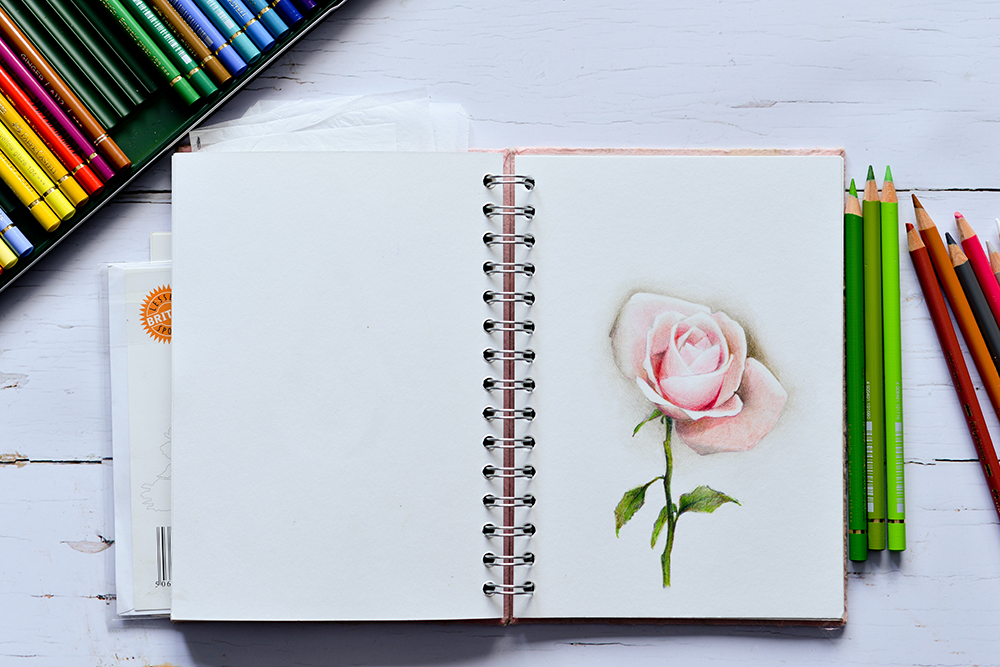
Incorporating Writing into Art Journals
Writing is a fundamental part of many art journals.
Whether it's song lyrics that resonate with you or reflections on your day, incorporating text can add a new layer of meaning to your pages.
Writing can serve as a focal point or simply be another element in your visual diary.
The Visual Diary Aspect
An art journal can serve as a visual diary, a place to record your life and express your emotions through images and words.
It's a personal space where you can document your experiences and feelings in a creative and visually appealing way.
Looking back at your art journals can be a powerful tool for reflection and self-discovery, allowing you to see how far you've come on your creative journey.
Written Journal Meets Visual Expression
Advancing to the next stage in art journaling often involves a seamless blend of written journaling and visual expression.
This hybrid approach can unlock new dimensions of self-expression, as the written word and imagery interact to tell a more comprehensive story.
For instance, a journal entry about a challenging day can be enhanced with abstract colored pencil strokes that convey the emotional undertones of the experience.
This combination allows for a richer narrative and a more profound reflection on one's thoughts and emotions, making the journal a multi-faceted tool for personal exploration and growth.
Moreover, this next stage of art journaling can serve as a powerful coping mechanism.
It provides a healthy way to process complex feelings and experiences, turning the journal into a confidant and a canvas for catharsis.
As individuals experiment with different mediums and techniques, they often find that their journal becomes a visual diary that chronicles their journey through life's ups and downs.
The evolution of each page mirrors the personal growth of the journal keeper, making every art journal a unique testament to the healing power of creative self-care and self-expression.
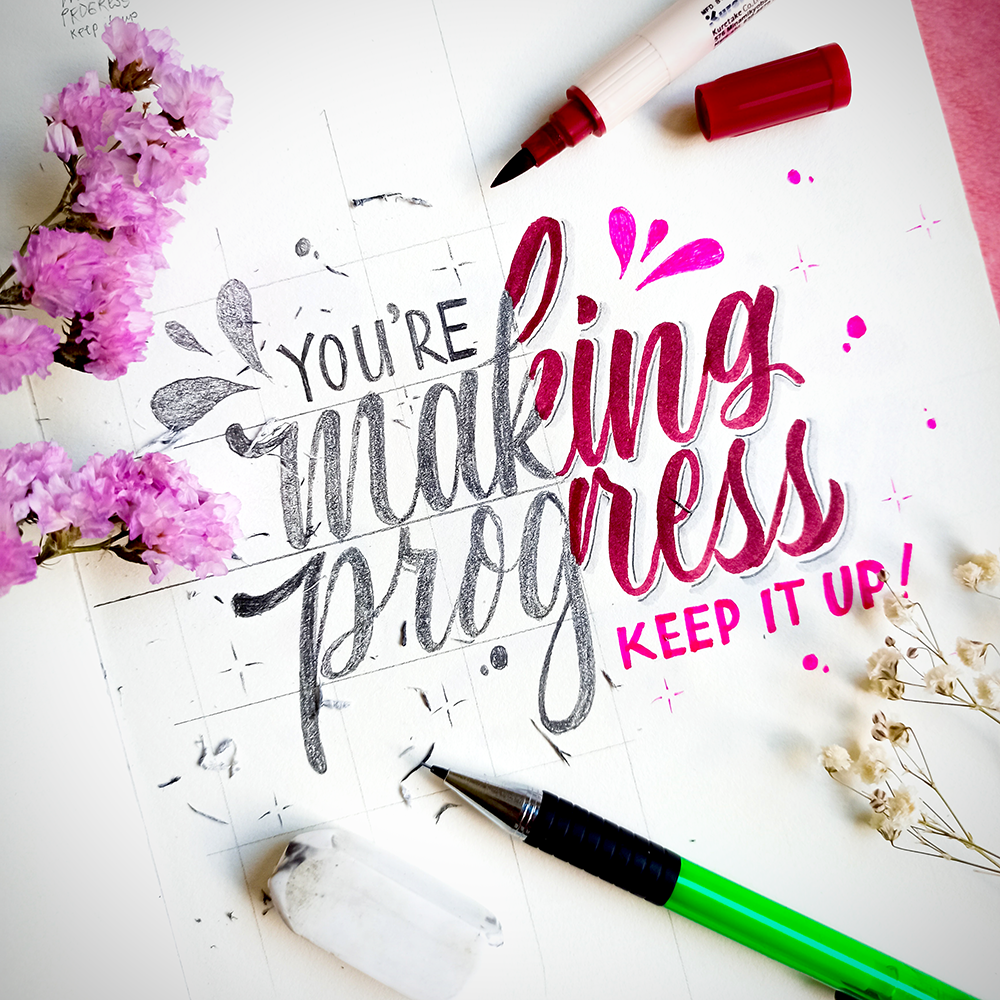
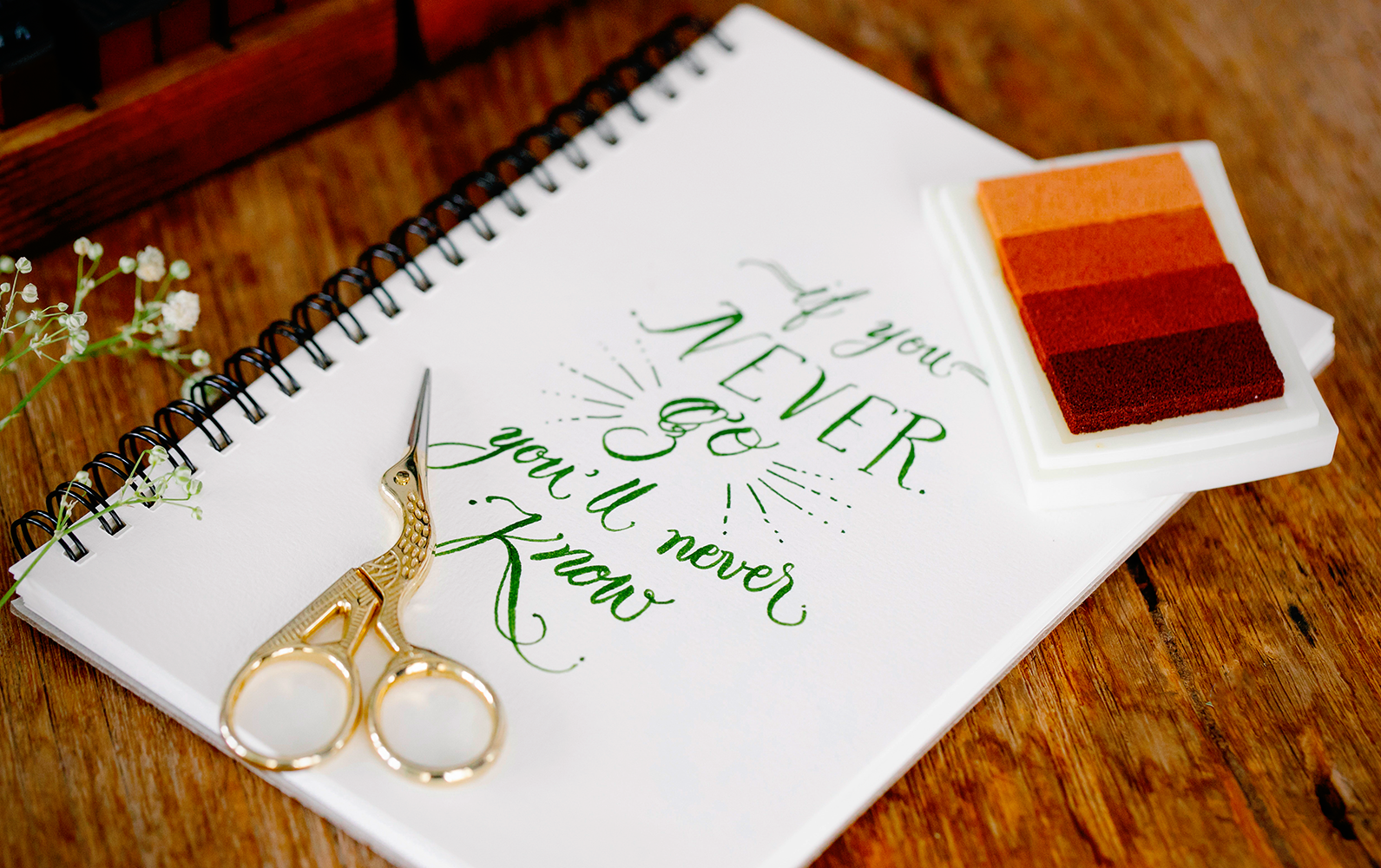

The Synergy of Art Journaling and Digital Tools
In the digital age, the fusion of traditional art journaling with digital tools opens up a new realm of possibilities for self expression and creative self care.
Artists are no longer confined to the physical pages of a journal; they can now incorporate digital elements such as photographs, digital stamps, and typography using software and apps.
This synergy allows for an endless array of textures, colors, and elements that can be layered and manipulated with the click of a mouse, offering a unique way to de stress and channel creativity.
The integration of digital tools does not diminish the hands-on experience of art journaling; rather, it enhances it.
Artists can experiment with digital brushes that mimic real-life strokes, blend colors in ways that are not possible with traditional media, and even undo mistakes, which can be a significant aspect of creative self care.
The ease and accessibility of digital tools mean that anyone with a computer or tablet can start an art journal, making self expression and the opportunity to de stress through art more accessible than ever before.
The Significance of Color in Art Journals
Color plays a pivotal role in the realm of art journals, often serving as a silent yet powerful language for self-expression.
For art journalists, the choice of hues—whether from watercolors, acrylics, or colored pencils—can evoke emotions and set the tone for a page.
A painted background is not merely a canvas; it's a mood setter that can transform a worried page into a holds barred space for creativity.
The interplay of colors can narrate stories without a single written word, making every stroke and shade a part of the journal's unique lexicon.
In the journey of creative self-care, the use of color is a therapeutic tool.
It's a healthy way to de-stress, allowing the artist to pour their feelings onto the page.
A vibrant palette can uplift spirits, while muted tones might reflect contemplation or melancholy.
Art journalists often find that working with colors helps them process emotions, making their art journal a sanctuary where they can explore their inner world in one space.
The act of choosing and applying color is an intimate part of the creative process, one that is as revealing as it is healing.

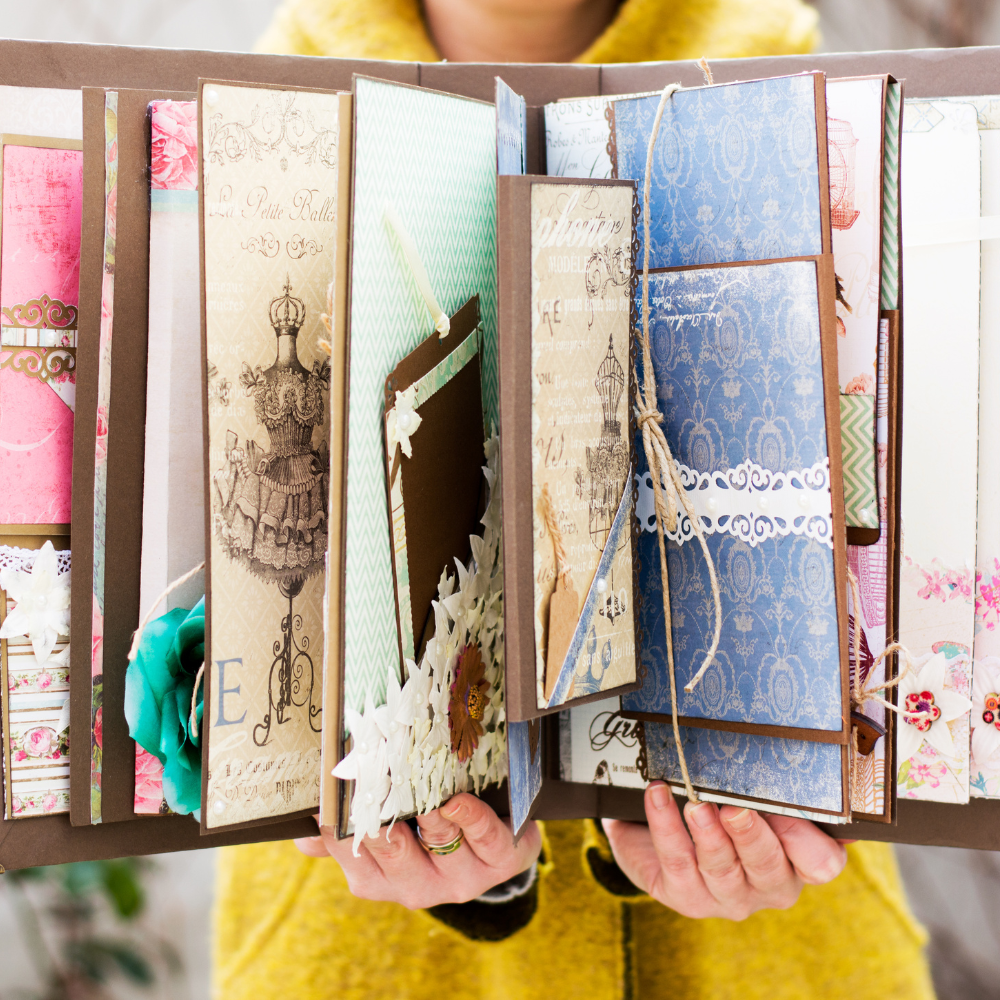

Interplay of Texture and Layering in Art Journals
Art journals are not just a canvas for self expression; they are a tactile playground where the interplay of texture and layering takes center stage.
By incorporating various materials such as fabrics, papers, and found objects, artists can create a rich tapestry that begs to be touched.
This sensory experience is a form of creative self care, allowing individuals to de stress as they focus on the feel of the materials under their fingers.
The act of layering these textures can be therapeutic, as it symbolizes the complexity of our thoughts and emotions, providing a physical form to the abstract.
Moreover, the strategic use of texture can elevate the visual impact of an art journal page.
Techniques such as embossing, collage, and impasto add dimension and intrigue, inviting the viewer to look closer.
For those seeking to de stress, the repetitive motion of layering and manipulating materials can be a meditative practice.
It's a way to quiet the mind and engage in the moment, making art journaling an effective method for creative self care.
The resulting pages are not just a feast for the eyes but also a testament to the healing power of hands-on creativity.
Integration of Stamps and Patterns in Journals
Stamps and patterns can add a dynamic dimension to art journals, offering a great idea for those looking to infuse their pages with texture and rhythm.
The use of a stamp pattern is more than a decorative element; it's a form of expressive outlet that can symbolize repetition in life or create a visual echo of a theme.
Art journalists frequently employ stamps to build layers or to add a signature motif that recurs throughout their journal, providing a sense of continuity and identity to their work.
Moreover, stamps are a versatile tool in the art journalist's kit.
They can be used with ink for a classic look or with paint for a more textured effect.
Travel journals, in particular, benefit from the incorporation of local motifs or symbols that capture the essence of a journey.
This technique not only embellishes the visual diary but also anchors memories within the tactile world of the journal.
For those seeking more tutorials, the internet is replete with resources—artists love watching and learning new ways to integrate stamps into their art journals, making each page a testament to their evolving story.
The Impact of Paper Ephemera
Paper ephemera, such as tickets, postcards, and stamps, can add a personal and nostalgic touch to art journals.
These items can serve as a reminder of a special moment or inspire a new direction in your creative process.
Moreover, incorporating paper ephemera is a great way to repurpose and recycle materials while adding unique texture and visual interest to your pages.
For instance, you can use old movie stubs to create a cinema-themed page or recycle packaging from your favorite snacks as collage material.
The possibilities are endless, and the addition of these pieces adds depth and character to your art journal.
Plus, it's always fun to look back on these pages and reminisce about the memories they hold.
Using Household Items in Art Journals
You don't need expensive art supplies to create a stunning art journal.
Household items like old books, magazine cutouts, and even kitchen supplies can be used to add texture and interest to your pages.
This approach not only saves money but also encourages creative thinking and resourcefulness.
Try using a fork to create interesting patterns with paint or incorporating bubble wrap for a textured effect.
The possibilities are limitless, and by looking at everyday items in a new light, you can add unique touches to your art journal that truly make it your own.
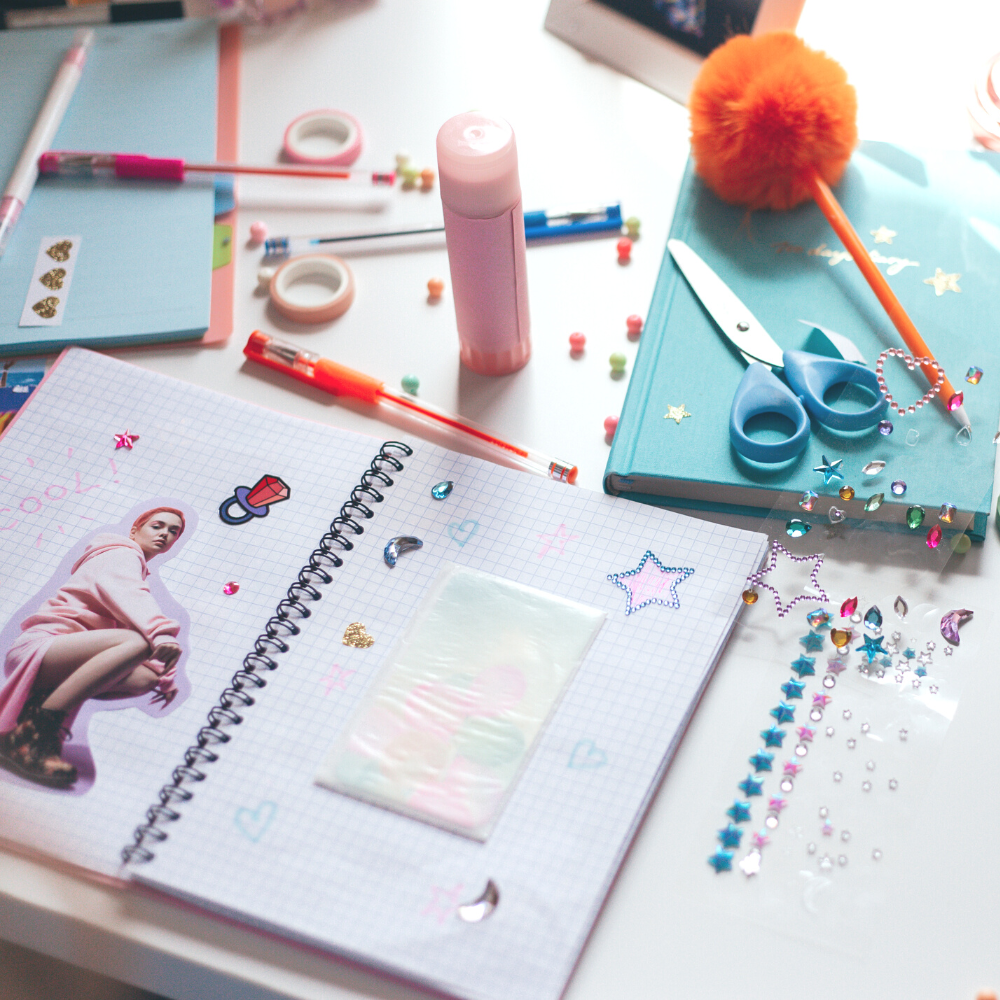
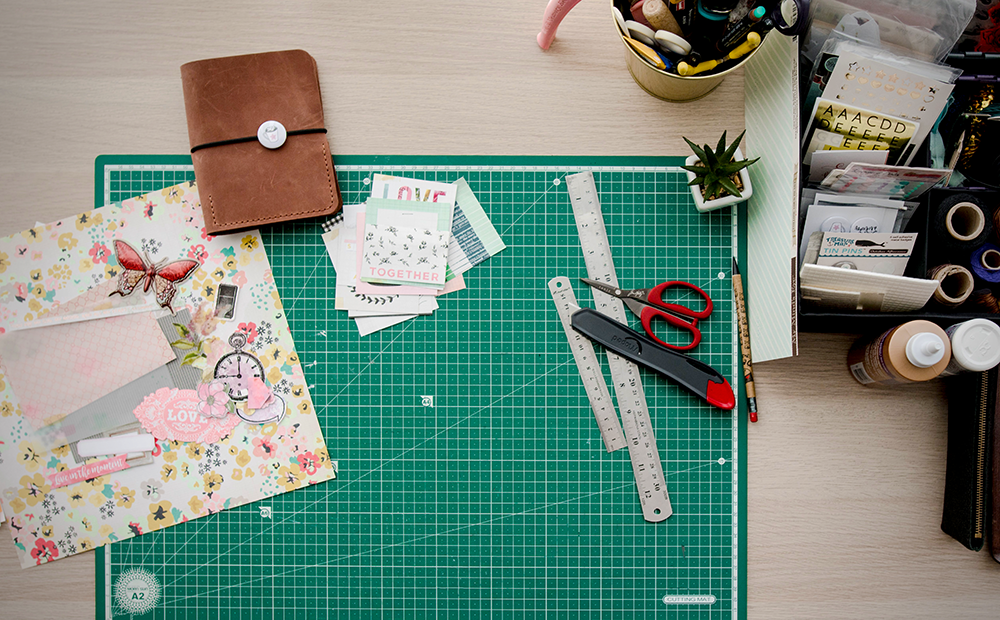
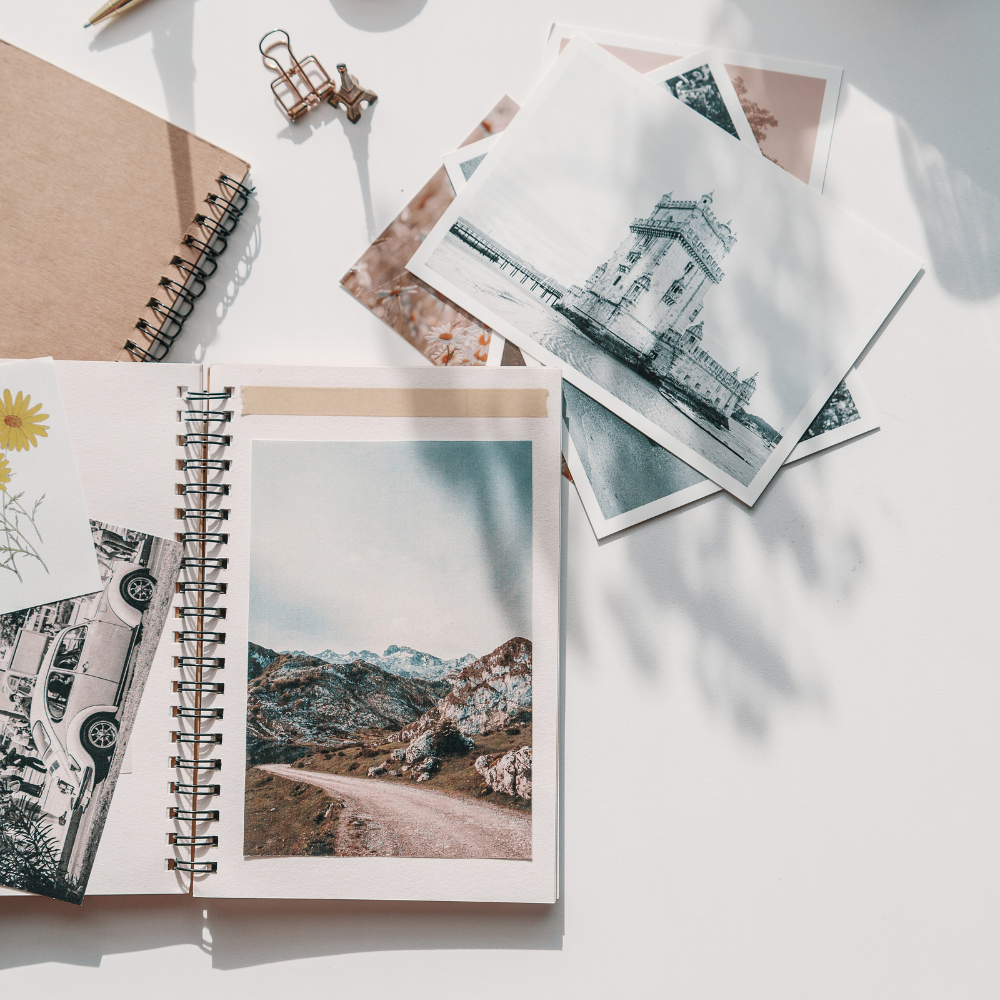
Intersection of Self-Care and Art Journaling
The concept of creative self-care has gained significant traction in recent years, and art journaling stands at the forefront of this movement.
By engaging in the artistic expression within the pages of all the journals one owns, individuals find a sanctuary where they can decompress and explore their innermost thoughts and feelings.
The act of selecting a colored pencil and transferring one's emotions onto paper is not just an artistic endeavor; it's a form of self-care that nurtures the mind and soul.
This practice allows for a personal retreat from the stresses of daily life, offering a healthy way to de-stress and reconnect with oneself.
Art journaling as a form of creative self-care is not limited to those with artistic prowess; it is a universal tool for self-expression that transcends skill levels.
Whether it's a written journal entry adorned with doodles or a full-page mixed media collage, the emphasis is on the process rather than the outcome.
This form of journaling encourages individuals to let go of perfectionism and embrace the therapeutic benefits of creating without judgment.
As one progresses to the next stage of their art journaling journey, they often discover a deeper understanding of their personal narrative and a renewed sense of emotional well-being.
The Art Journal as a Coping Mechanism
For many, art journals are more than just a creative outlet; they are a way to cope with life's challenges.
The act of transferring thoughts and feelings onto paper can be therapeutic and provide a sense of relief and clarity.
Art journaling can also serve as a healthy distraction, allowing individuals to focus their energy on creating rather than dwelling on negative thoughts.
The tangible result of an art journal page can be a powerful reminder of one's strength and resilience, making it a vital coping mechanism for navigating difficult situations.
The Therapeutic Aspects of Art Journaling
Art journaling transcends mere artistic endeavor; it is a potent form of creative self-care that nurtures mental well-being.
Engaging in this practice allows individuals to explore their inner landscapes, providing a safe haven for self-expression and emotional release.
The tactile sensation of moving a brush across the page or the rhythmic motion of pen on paper can be meditative, offering a respite from the chaos of daily life.
Art journaling can serve as a visual form of journal therapy, where the act of creation is as healing as the outcome.
Moreover, art journaling can be one of the most healthy ways to de-stress.
The process of making art in a journal is inherently personal and can be tailored to fit any mood or need.
Whether it's through bold, cathartic strokes or detailed, focused work, art journaling provides a unique outlet for stress relief.
It's a practice that can be done at any time, requiring no specific schedule, making it an accessible form of self-care for those with busy lives or seeking solace in solitude.
Cultivating Mindfulness Through Art Journaling
Art journaling offers a pathway to mindfulness, encouraging practitioners to be present in the moment.
This creative process requires one to slow down, to focus on the brush in hand, the color being used, and the emotion being conveyed.
Such focus on the present moment is a core aspect of mindfulness, which has been shown to reduce stress and improve overall mental health.
By incorporating art journaling into one's routine, it becomes a ritualistic pause in the day, a time to reflect and reground oneself amidst life's turbulence.
In addition to fostering mindfulness, art journaling can be a form of meditation in motion.
As one becomes absorbed in the act of creating, the mind tends to let go of persistent thoughts and worries, entering a state of flow.
This state, characterized by a feeling of energized focus, full involvement, and enjoyment in the process, is another aspect of creative self-care.
It allows for a deep connection with the self, promoting a sense of peace and contentment that can have lasting effects beyond the journaling session itself.

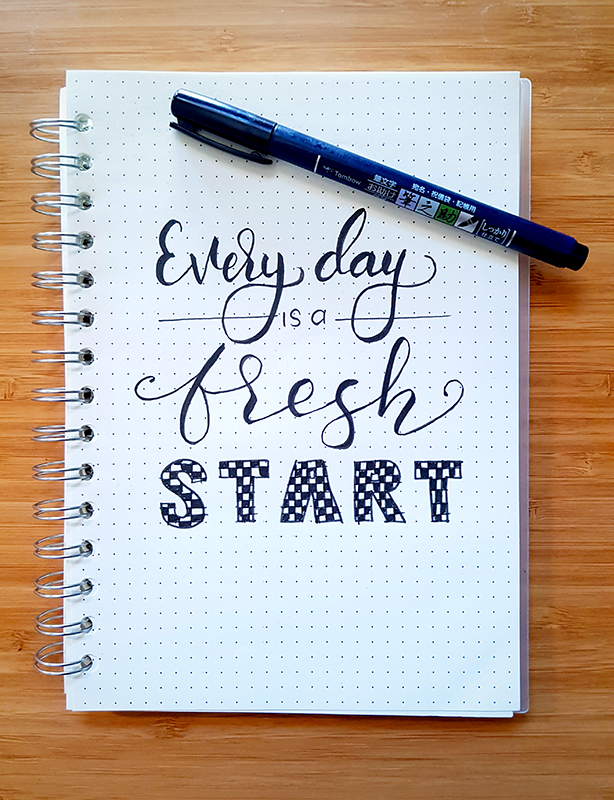

Art Journaling Tutorials and Inspiration
For those new to art journaling or looking for fresh ideas, art journaling tutorials can be a great resource.
These tutorials often provide step-by-step guidance and can spark inspiration for your own journal.
Watching other artists create can also be a source of motivation and new techniques.
Social media platforms, such as Instagram and YouTube, are brimming with art journaling accounts, making it easy to find tutorials and connect with a community of fellow art journalists.
Furthermore, browsing through different styles and themes can open up possibilities for your own journal.
Exploring the work of other artists can be incredibly inspiring for your own journal.
Seeing how others use their art journals can introduce you to new techniques and perspectives, and help you find your unique voice within the art form.
Whether you're drawn to bold abstracts or delicate watercolor landscapes, there's something out there for every creative soul.
By experimenting with different techniques and styles, you can continuously evolve your art journal into a visual representation of your journey.
The Freedom of Imperfection
One of the most liberating aspects of art journaling is the freedom to be imperfect.
An art journal is a safe space where mistakes can become part of the beauty, and the pressure to create something "perfect" is lifted.
It's about the joy of creating and the process of self-discovery.
By embracing imperfection, one can let go of self-judgment and fully immerse themselves in the therapeutic aspects of art journaling.
Moreover, the acceptance of imperfections can translate to other areas of life, promoting a healthier mindset and reducing stress.
Art journaling is not about creating a masterpiece; it's about engaging with your inner world and finding solace in the process.
So, let go of perfectionism and embrace the beautiful mess that is art journaling.

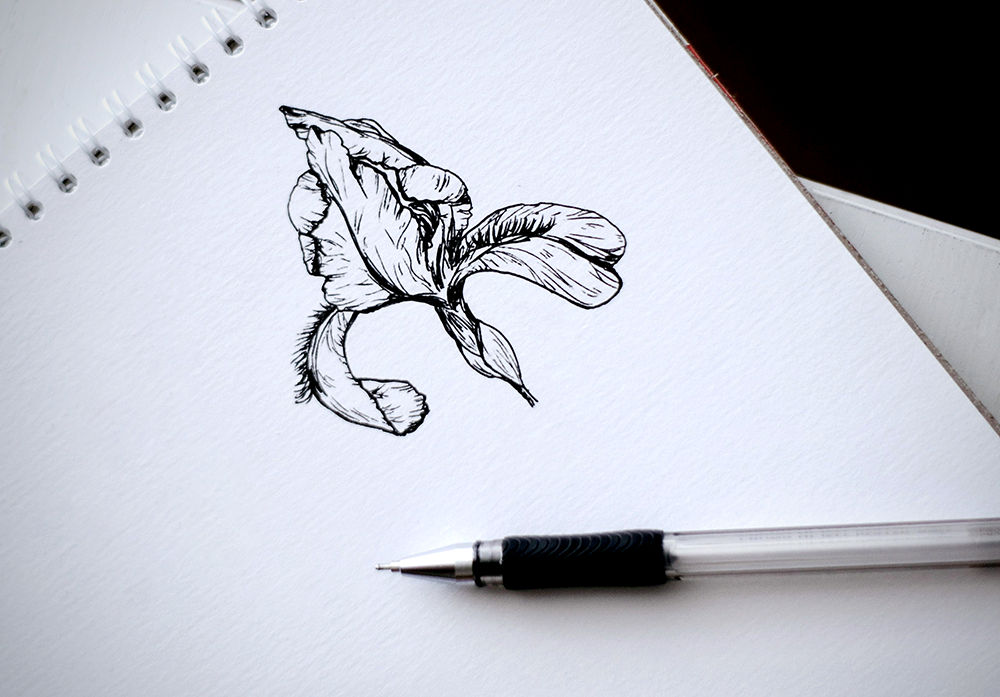

The Evolution of a Page
Art journal pages frequently evolve over time.
A page might start as a simple sketch and, through several stages, become a complex collage that incorporates colors, textures, and various materials.
This evolution is a great metaphor for the personal growth that can occur through art journaling.
As one becomes more comfortable with the process, they may experiment with new techniques or incorporate deeper emotions into their pages.
The end result is not just a visually appealing page but also a testament to one's creative journey and self-discovery.
Art Journaling Tips and Tricks
Here are some tips to get you started with art journaling:
- Start with a blank page: it can be intimidating, but also liberating, to face a blank page. Let go of your expectations and allow yourself to create freely.
- Collect inspiration: gather images, quotes, colours, textures, and other elements that inspire you and use them as prompts for your art journal.
- Play with different mediums: try out different art materials, like watercolours, acrylics, ink, markers, or pastels, and experiment with different techniques, like layering, blending, stamping, or stencilling.
- Write your thoughts: use your journal as a way to document your thoughts, feelings, and experiences. Write down your goals, your challenges, your achievements, and your dreams.
- Share your work: join a community of artists, online or offline, and share your art journal pages. Get feedback, learn from others, and inspire others with your creativity.
- Be patient and kind to yourself: art journaling is a process, and it takes time to develop your own style. Allow yourself to make mistakes and be patient with your progress. Remember that the most important aspect of art journaling is enjoying the journey.



The Transformative Power of Art Journaling
An art journal is more than just a regular sketchbook; it's a deeply personal and versatile canvas for self-expression.
It can look like a sketchbook, a scrapbook, a planner, or a painted masterpiece.
It's a space where you can let your imagination run wild, experiment with different mediums, and express yourself creatively.
Art journaling is a therapeutic, reflective, and creative practice that offers numerous benefits for your well-being.
By incorporating various techniques, materials, and personal experiences into the pages of an art journal, individuals can express their thoughts and feelings in a tangible, visual form.
With minimal supplies needed and endless possibilities, anyone can start an art journaling practice today.
The key is that it reflects the individual's creative process, incorporating a mix of writing, drawing, painting, and collage.
Art journals are not just about the final product but about the journey of creating and the therapeutic benefits that come with it.
Whether you're using simple art materials or diving into mixed media, the act of art journaling is a powerful form of creative self-care and self-discovery.
There is no right or wrong way to do it, and no limits to what you can create.
Find your next blank page, let go of expectations, and allow yourself to explore the therapeutic world of art journaling.
Start your journaling journey now and see where it takes you!
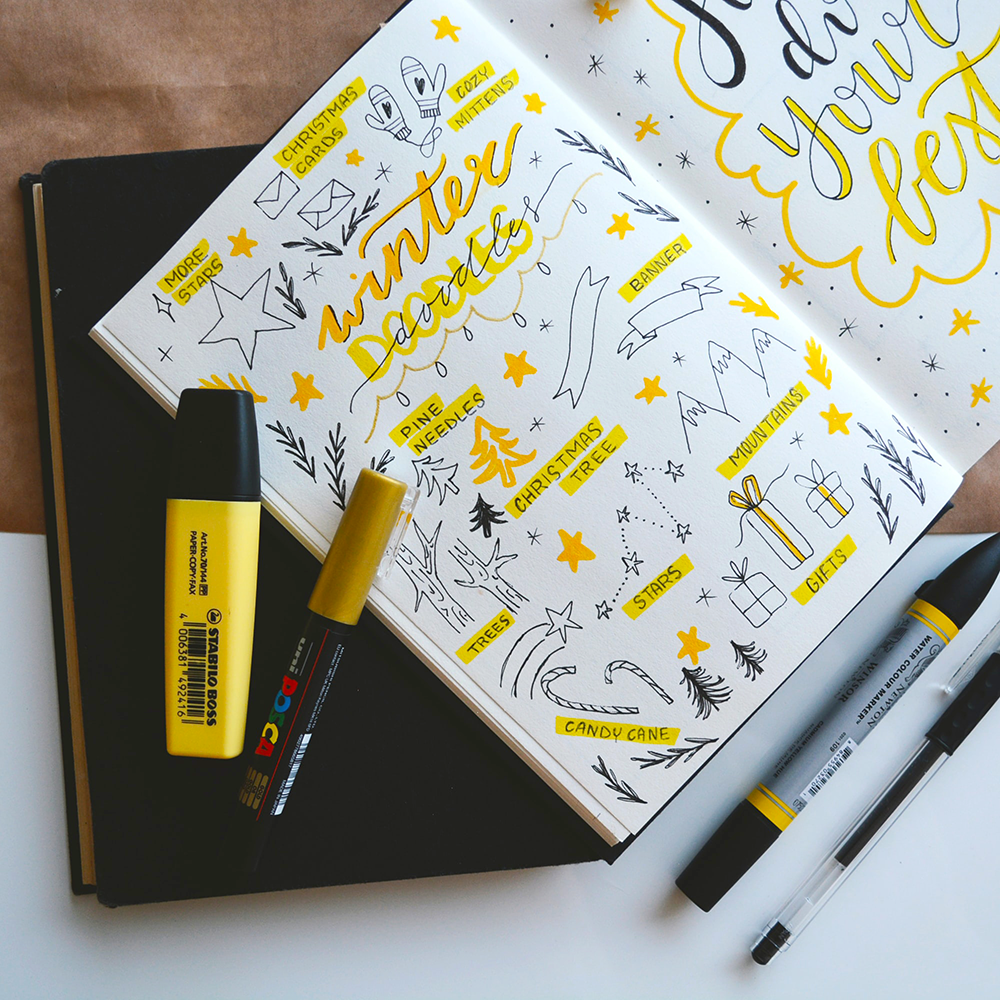


Ready to start creative journaling? Check out Taiga Journals' video!
Want even more content about creativity and art?
Be sure to check out all of our creative chronicles!
Eager to learn more about journals and sketchbooks?
Check out some of our other articles:
-How do you set up an art journal?
-What is the difference between a journal and an art journal?
-What's the difference between a sketchbook and an art journal?
